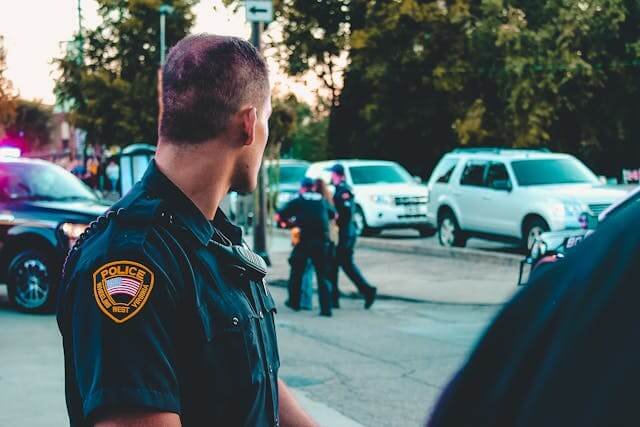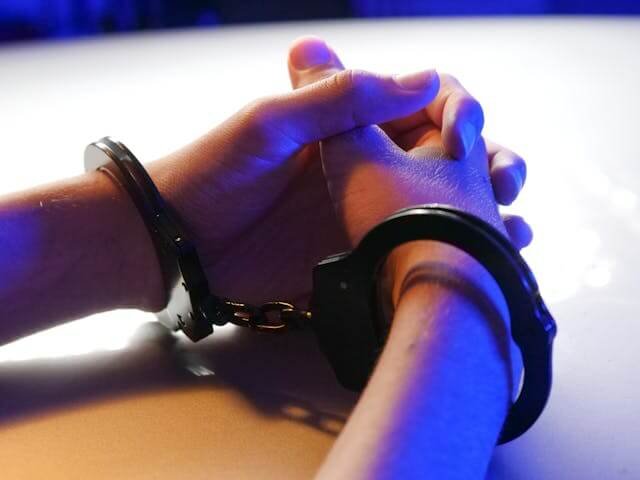
The Fatal Misunderstandings
Picture this:
A teenager, overwhelmed by the chaos of a crowded mall, starts rocking back and forth, hands pressed over his ears. A security guard calls the police, reporting a “suspicious person possibly on drugs.” The officers arrive, barking orders. The boy doesn’t look at them. His body locks up, frozen in terror.
To the officers, his silence reads as defiance. His stiff posture seems like aggression. In seconds, what should have been a simple welfare check turns into a violent restraint.
This isn’t hypothetical. It’s happened, over and over again.
Police encounters can quickly turn dangerous when officers don’t recognize the signs of autism. Tragically, there have been multiple cases where nonverbal autistic individuals were injured, restrained, or even killed because of miscommunication. The lack of awareness and training in law enforcement puts this vulnerable population at risk every day.
There’s a moment, heart-stopping and suffocating when a parent realizes their child is in danger not because of anything they’ve done, but because of what they can’t do.
Can’t speak.
Can’t respond to shouted commands.
Can’t stop their hands from fluttering in fear.
For families of nonverbal autistic individuals, this moment often comes in the flashing red and blue of police lights.
1. Why Police Struggle with Nonverbal Autism

1.1 Failure to Recognize Nonverbal Autism
When officers approach someone who isn’t speaking, their first assumption is rarely autism. Instead, they may suspect intoxication, defiance, or even criminal intent.
Many nonverbal autistic individuals cannot respond to verbal commands, which can immediately put officers on high alert. Without proper training, police may misinterpret:
- Silence as refusal to cooperate
- Delayed responses as intentional noncompliance
- Unusual body language as suspicious behavior
The Autism Society notes that approximately 20% of individuals with autism will interact with police officers before turning 21.
1.2 Misinterpretation of Autistic Behaviors
A nonverbal autistic person’s natural reactions like stimming or avoiding eye contact, can unintentionally escalate police encounters.
Common autistic behaviors that officers may misread include:
- Stimming (repetitive movements) – Hand-flapping or rocking mistaken for aggression.
- Avoiding eye contact – Perceived as dishonesty or evasiveness.
- Not responding to verbal commands – Seen as defiance rather than a communication barrier.
Notable cases involving autistic teenagers and challenging interactions with law enforcement:
- Burbank, California (July 2016): A 16-year-old autistic boy was tasered by police during a traffic stop. The officer pulled over the boy’s mother because he wasn’t wearing a seat belt. During the stop, the teen became agitated, and despite his mother informing the officer of his autism, the situation escalated, leading to the use of a taser.
- Fresno, California (January 2020): A 16-year-old boy with autism and epilepsy experienced a seizure at a fast-food restaurant. Police attempted to arrest him during the medical episode, leading to him being handcuffed while his mother pleaded for understanding, emphasizing his medical conditions.
- Buckeye, Arizona (July 2017): A 14-year-old autistic boy named Connor Leible was playing with a string when a police officer approached him. Misinterpreting Connor’s behavior, the officer forced him to the ground, resulting in cuts and bruises.
These incidents highlight the critical need for law enforcement to receive specialized training to better understand and appropriately respond to individuals with autism and other developmental disorders.
1.3 Escalation of Force Due to Misunderstanding

When an autistic person doesn’t react the way officers expect, the situation can spiral into unnecessary force.
Because many officers aren’t trained in autism recognition, they may:
- Use restraints on someone who is simply overwhelmed.
- Deploy tasers or pepper spray on individuals in sensory meltdowns.
- Wrongly arrest someone who is unable to communicate their needs.
A report by the Ruderman Family Foundation found that up to half of all police shootings involve disabled individuals, many of whom were autistic.
1.4 Lack of Communication Strategies
Without alternative communication training, officers may not know how to interact with nonverbal individuals safely.
Most police are trained to rely on verbal commands, but nonverbal autistic individuals may use:
- Augmentative and Alternative Communication (AAC) devices
- Sign language or picture cards
- Gestures or body language
Yet, few officers are taught to recognize these methods. Programs like Project Guardian aim to change this by training police in autism communication, but adoption is still limited.
2. Real-Life Consequences of Miscommunication

2.1 Case Studies of Tragic Police Encounters
Behind every statistic is a human story, many of which end in preventable tragedies.
- Linden Cameron (2020) – A 13-year-old autistic boy was shot by police during a mental health call. Officers later admitted they thought his panic attack was aggression.
- Arnaldo Rios Soto (2016) – An autistic man sitting with a toy truck was shot when police mistook it for a weapon.
- Rajon Cherry (2021) – A 21-year-old nonverbal autistic man, who was holding a cooking spoon. Despite commands to drop the object, Cherry did not comply, leading officers to deploy a Taser multiple times during the encounter. Cherry’s mother expressed concern over the officers’ handling of the situation, emphasizing the need for better training in dealing with individuals with autism.
2.2 Why Police See Danger Where There Is None
Most officers aren’t trained to understand that:
- Stimming isn’t a threat. Hand-flapping, rocking, or humming are ways autistic people self-regulate. Yet cops often mistake these for aggression or drug-induced behavior.
- Avoiding eye contact isn’t guilt. Many autistic individuals find direct eye contact physically painful. Police are trained to see averted gaze as deception.
- Silence isn’t defiance. When a nonverbal person doesn’t answer, officers assume resistance, not that they literally cannot speak.
This isn’t just a training gap. It’s a life-and-death blind spot.
2.3 The Aftermath: A Lifetime of Trauma
For families, the nightmare doesn’t end when the handcuffs come off or the ambulance leaves.
- Trust is shattered. How do you explain to a child that the “good guys” hurt them?
- Fear becomes constant. Every outing risks a deadly misunderstanding.
- The system fails them again. Few officers face consequences, leaving families to grieve in obscurity.
One mother told me, “I used to call 911 when my son eloped. Now, I’m terrified to. I don’t know who’s more dangerous, the traffic or the cops.”
3. Fixing the System: Better Responses to Autism

3.1 Mandatory Autism Training for Police
The first step to preventing tragedies is ensuring officers can recognize autism.
Key training should include:
- Identifying nonverbal autism
- De-escalation techniques for meltdowns
- Alternative communication methods
Departments like Baltimore Police have seen success with autism training programs others must follow.
3.2 Community-Based Safety Measures
Families shouldn’t have to wait for systemic change, there are steps they can take now.
- Autism ID bracelets & registries
- 911 alert systems for nonverbal individuals
- Sensory-friendly emergency response programs
4. A Call for Change: Protecting Nonverbal Autistic Lives

The intersection of nonverbal autism and law enforcement is a critical issue that demands immediate attention, before another life is needlessly lost.
While some progress has been made, systemic change is slow. Families, advocates, and law enforcement must work together to:
- Push for nationwide autism training
- Develop better crisis response programs
- Raise awareness to prevent future tragedies
How Do We Stop This?
Change won’t come from hoping for the best. It comes from demanding better.
1. Mandatory Autism Training for Every Officer
- Not just a 30-minute slideshow. Real, hands-on training with autistic individuals and families.
- Departments like Baltimore Police have shown it works, fewer use-of-force incidents, fewer tragedies.
2. Alternative Crisis Response Teams
- Why are armed officers the default for mental health calls? Cities like Denver are deploying medics and social workers instead, with dramatic success.
3. Community Safeguards
- Autism ID bracelets.
- 911 registry alerts.
- Sensory-friendly “safe stop” protocols for traffic stops.
How You Can Help Right Now:
- Share stories like Linden’s and Arnaldo’s. Awareness saves lives.
- Demand autism training in your local police department.
- Support organizations like The Autism Society and ASAN, led by autistic advocates.
Silence shouldn’t be a death sentence. Let’s make sure it never is again.
